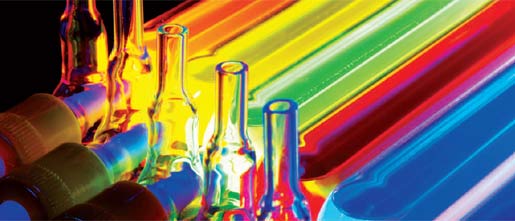Friday musings
The share price of Nanoco Group Plc (AIM: NANO) has continued to fall for the third day in a row following its interim announcement of a loss before tax of £2.36 million pounds for the preceding half-year period. The loss is blamed by the Chairman on the continuing transition from research-based company to manufacturer/producer. However he stressed the optimism of the company for its future orders' potential.Commenting on the results, Dr Peter Rowley, Nanoco's Chairman, said: "Our transition from a research-based company to a commercially focused, high-tech manufacturing business continues apace. Our existing commercial agreements are proceeding well and we continue in discussions with further potential customers. We are now working to deliver a 1kg batch of green quantum dots to a Japanese customer, attracting a US$2 million milestone payment."
Indeed quantum dots might be very important in the future of lighting, solar panels and, most interestingly for HEXUS readers, in computer displays. Nanoco will be the only manufacturing company to make commercial quantities of quantum dots with the added benefit of producing them without the use of rare, costly and potentially poisonous heavy metals. They are the only RoHS compliant quantum dots.
Competitor quantum-dot producers need to use Europium, Terbium and Yttrium to make their red-emitting dots, all expensive and over-exploited rare earth metals. Quantum dots measure between 2 and 10 nanometres, that's the size of about 50 atoms side by side! Depending on the size of the dots, the light emission when excited varies, the size of the manufactured dot can be precisely controlled so the colour of light they emit can also be tuned to whatever is desired.

When used in OLED displays Nanoco's quantum dots (QDs) have the following advantages over other technologies;
• Better colour purity : the colour
produced by QDs is a considerable improvement over competing OLED
technologies, which provides for an improved viewing experience for the
end user.
• Added flexibility : QDs are soluble in both aqueous
and non-aqueous solvents, which provides for printable and flexible
displays of all sizes, including large-area TVs (QD TV™)
• Improved lifetime : QDs are inorganic; as such they
offer the potential for improved lifetimes when compared to alternative
OLED technologies.
If Nanoco can get past this difficult transition period it should have a very bright future (pun intended - ed?). Actually part of the expenses contributing to the recent loss were in protecting that future - patent-related costs. Statutory cash, cash equivalents and deposits, at 31 January 2012 were £14.4 million (31 January 2011: £3.8 million; 31 July 2011: £17.1 million). Both cash and costs continue to be prudently and tightly managed.













